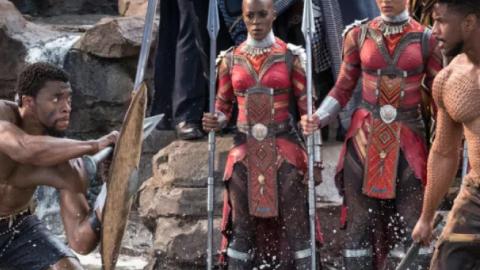It’s just another TV ad, but it speaks volumes. Titled “Anthem,” the latest commercial from Ancestry.com offers a video montage of an African woman attired like a female warrior from the pre-colonial kingdom of Dahomey, a white brewer inspecting his vats, a band of Native Americans on a forced march through the snow, an Appalachian moonshiner getting arrested by the feds, a Puritan girl fleeing down a cobblestone hill, a 17th-century ship setting forth from a rocky coast, the same female warrior defiantly standing before the throne of a hostile ruler, and the face of a lovely young woman who could well be descended from all these people, followed by the slogan: “Unlock your past. Inspire your future.”
From the perspective of genetic science, these ads are pure snake oil. Dozens of companies now offer ancestry testing, each using a different database of DNA samples from broadly defined geographical regions, and there is no scientifically agreed-upon method for validating the results. In addition, each company tests only a small part of the genetic material you submit, and often the test is limited to only one side of your family. Finally, the regional DNA samples used in the test are from the people who live in the regions now, as opposed to during your ancestors’ time.
What’s more, it’s hard to see how an ancestry test could inspire anyone’s future. Even if your lineage includes some truly noble characters, any inspiration they might provide will be greatly diluted by sheer numbers. Simple arithmetic shows that you have hundreds of ancestors who lived in the 19th century, thousands in the 18th, tens of thousands in the 17th, and so on, back through the millennia until the number collapses into the handful of remote forbears that you share with the rest of humanity, including me. In such a huge haystack, there are bound to be a few noble needles. But the algorithm for locating them does not exist.
None of this keeps the ancestry testing business from booming. Indeed, now that Senator Elizabeth Warren has clarified the fact that she is between 1/64th and 1/1,024th Native American, everyone whose family has been on this continent six generations or more will want to spit in a cup and wait for a smoke signal offering them a job at Harvard, a high political office, or (at a minimum) a casino license.
Less cynically, the ancestry testing business speaks to the natural human yearning for a past—meaning not an accumulation of dusty historical detail, but an emotionally satisfying narrative capable of filling the void that opens at the terminus of memory. Traumatic experiences such as migration, forced exile, and slavery only intensify this yearning. Doubtless this is why the ancestry testing industry runs so many ads targeting African Americans. For example, over Memorial Day weekend in 2016, Ancestry.com launched a major advertising blitz timed to coincide with the premiere, on the History Channel, of a new dramatic series about a black American family connecting with its African origins.
That series was called Roots, but it was actually a remake of the original Roots, produced in 1977 by ABC-TV and based on the 1976 bestselling book by Alex Haley. At the time, there were only three TV networks, and most Americans, black and white, were not well informed about slavery. So Haley’s fictionalized account of a family tree dating back to a Mandinka youth captured by slave traders in the Gambia struck a nerve in the body politic. Indeed, when the final episode of Roots attracted a record 100 million viewers, the consensus was that all Americans, black and white, were finally ready to reckon with this harsh and pivotal dimension of their history.
But that was then, and this is now. As the evils of slavery continue to be depicted in books, films, TV series, and every other type of media, there are signs that the topic is becoming less inspirational for everyone—including, or perhaps especially, African Americans. In 2016, when the History Channel was promoting its Roots remake, one of the lead actors, Anika Noni Rose, commented to the New York Times, “[T]here are a lot of people who are tired of the slave narrative. With regard to black people, I think they are tired of seeing themselves as enchained and downtrodden.” In Rose’s view, it was “time to move past…shame, embarrassment, guilt,” and recognize that the men and women who survived slavery did so “with a fortitude of superhero proportions.”
A Hit of Vibranium
Prescient words, given that the second biggest box-office hit of 2018 is a superhero extravaganza from Marvel Studios called Black Panther (the first is Marvel’s Avengers: Infinity War). Set in a mythical African country called Wakanda, Black Panther is about a power struggle between a noble young king, T’Challa (played by Chadwick Boseman), and his estranged younger cousin, N’Jadaka, also known as Erik Killmonger (played by Michael B. Jordan), who returns from exile in America and violently usurps the throne in defiance of T’Challa, the royal family, and the palace guard made up of Dahomey-style female warriors. To win back his kingdom, T’Challa must consume a special herb infused with a mysterious mineral called vibranium, which fell to earth as a meteorite thousands of years ago and confers supernatural powers.
To date, Black Panther has grossed $700 million in North America and $650 million elsewhere, for a total international box office of over $1.3 billion. This stunning success gives the lie to the Hollywood dictum that films with black characters don’t play well overseas. Speaking as a non-fan of superhero blockbusters, I would say that in many respects Black Panther is similar to the 17 movies that have preceded it in the so-called Marvel Universe. It is underwritten, overproduced, formulaic, and so addicted to empty spectacle that the rare moment of drama or comedy gets lost in the tsunami of special effects and hyped-up battles scenes that strain patience along with credulity.
But in certain other respects, Black Panther is refreshing. In terms of visual language, the whole fantasy genre of movies, TV series, and superhero blockbusters draws extensively, and exhaustively, on images from European history, especially the ferocious armor and weaponry of the Bronze and Iron Ages. In a similar vein, the Chinese film industry draws, just as exhaustively, on that country’s dynastic past. Meanwhile, other parts of the world have been neglected, especially Africa. Wakanda may be a fantasy, but its African-inflected visuals provide a welcome change.
Likewise the music. Marvel Studios is not known for its orchestral scores—quite the contrary. On the theory that music should not attract attention, evoke emotion, or distract the viewer from the action, the soundtracks in the Marvel Universe are deliberately generic, interchangeable, and forgettable. Speaking again as a non-fan, I welcome the addition of African percussion and vocals to Black Panther’s otherwise anodyne soundtrack. If nothing else, it makes the film less boring.
But to return to my main theme: does this film provide African Americans with a narrative more uplifting than that of slavery, segregation, and survival? The answer from some quarters is a resounding yes.
Big Cats
From the standpoint of Hollywood, which is to say, the multinational corporations that own the major studios and distribution networks, it is gratifying to imagine that Marvel Studios has discovered the secret of turning movie-making into a risk-free business that can be relied upon not only to sell oodles of theater tickets but also to drive consumers toward heaps of profitable merchandise. The multinational corporation that does this best is, of course, the Walt Disney Company. And Disney owns Marvel Studios. This being the name of the game, African Americans have every reason to celebrate when black artists get a piece of the action.
Yet the celebration is not just about money. Black artists can already get a piece of the action by making sensational, exploitative films, TV shows, and rap about crime and dysfunction in impoverished neighborhoods, not to mention high-minded Oscar bait about slavery and racism. And though Black Panther is now part of an aggressive P.R. campaign for Oscar gold, it is not typical of the black-themed films that have done so in the past. As Jamie Broadnax, curator of a popular website called Black Girl Nerds, argues, the success of Black Panther demonstrates that black artists can make money without focusing narrowly on “black pain, and black suffering, and black poverty.” Instead, they can focus on “centered black people…[with] a lot of agency…rulers of a kingdom, inventors and creators of advanced technology.”
This sounds more uplifting than it is. Black Panther is based on characters created in 1966 by two Jewish artists, Jack Kirby and Stan Lee, who together created almost all the Marvel colossi now bestriding the big screen. By all accounts, Kirby and Lee were mainly interested in selling more comic books, not providing black readers with a “redemptive counter-mythology,” as the New Yorker recently asserted.
This and other inconvenient facts are highlighted in a Washington Post article by the Kenyan writer and political cartoonist Patrick Gathara. Noting that the settings of most Marvel Comics are ordinary American cities where everyone, “from policemen to high school students to retirees and the super-rich…have some chance of becoming superheroes,” Gathara continues: “Wakanda, on the other hand, is about royalty and warriors. Its wealth does not come from the ingenuity of its people but from a lucky meteor strike and the benevolence of its all-wise rulers.”
Here it is worth considering that what we are talking about here is a $350 million Disney cartoon aimed not just at black Americans but also, importantly, at a global audience of several hundred million other people who have little knowledge of, or interest in, the black American experience. In this regard, Black Panther bears a striking resemblance to another, earlier Disney cartoon about a noble African king who loses his throne to an evil usurper and must fight to regain it. The creative team behind Black Panther grew up with The Lion King, a 1994 animated feature that subsequently became a hit musical. And on some level, perhaps, one big cat is much like another.
Personally, I enjoyed both versions of The Lion King, especially the stage production with its fascinating costumes. But I also joked to friends that it was odd, in that triumphant time right after the fall of Communism, to see Hollywood and Broadway both telling the world, “Get yourself a good ruler, and all will be well!”
The joke is less amusing today, with liberal democracy besieged on all sides and (some would say) succumbing to its own internal contradictions. This may be why Gathara faults Black Panther for portraying Africa as “a continent run by a wealthy, power-hungry, feuding and feudalist elite,” and Wakanda as “a nation with the most advanced tech and weapons in the world” but bereft of “thinkers to develop systems of transitioning rulership that do not involve lethal combat or coup d’etat.”
In a sense, this criticism is unfair, because popular culture has always been about power-hungry elites and lethal combat—why should Black Panther be any different from Game of Thrones? But in another sense, Gathara is right to criticize the implicit politics of Black Panther. The problem is not just that its Afro-futurist utopia, Wakanda, is a backward autocracy where the only way to transfer power is through dynastic succession or civil war. It is also that the villain of the piece, Killmonger, confesses in his dying hour that he never meant to turn out evil, but life in America made him into a monster.
Can this message unlock the past and inspire the future for African Americans whose roots in America go back four centuries? It’s hard to see how. Is it guaranteed to make over $100 million in China? That’s easy.




















